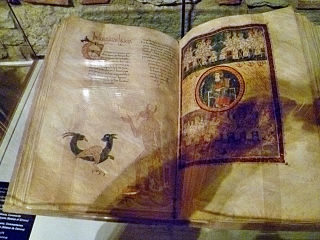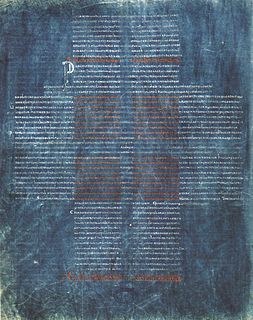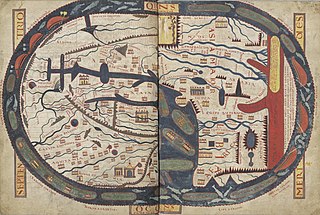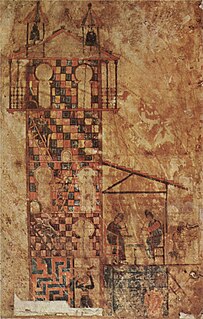 W
WThe designation arte de (la) repoblación was first proposed by José Camón Aznar in 1949 to replace the term Mozarabic as applied to certain works of architecture from the Christian kingdoms of northern Spain between the end of the 9th and beginning of the 11th centuries. Camón argued that these buildings were related stylistically to the architecture of Asturias and owed little to Andalusian styles. Moreover, since they were built by Christians living under Christian rule, neither were they Mozarabic.
 W
WThe Codex Vigilanus or Codex Albeldensis is an illuminated compilation of various historical documents accounting for a period extending from antiquity to the 10th century in Hispania. Among the many texts brought together by the compilers are the canons of the Visigothic Councils of Toledo, the Liber Iudiciorum, the decrees of some early popes and other patristic writings, historical narratives, various other pieces of civil and canon law, and a calendar.
 W
WCommentary on the Apocalypse is a book written in the eighth century by the Spanish monk and theologian Beatus of Liébana (730–785) and copied and illustrated in manuscript in works called "Beati" during the 10th and 11th Centuries a.d. It is a commentary on the New Testament Apocalypse of John or Book of Revelation. It also refers to any manuscript copy of this work, especially any of the 27 illuminated copies that have survived. It is often referred to simply as the Beatus. The historical significance of the Commentary is made even more pronounced since it included a world map, which offers a rare insight into the geographical understanding of the post-Roman world. Well-known copies include the Morgan, the Saint-Sever, the Gerona, the Osma and the Madrid Beatus codices.
 W
WThe Escorial Beatus is a 10th-century illuminated manuscript of the Commentary on the Apocalypse by Beatus of Liébana. The illuminations of the manuscript show similarities in style to those produced by Florentius, the artist responsible for a copy of the Moralia in Job of Pope Gregory I. The manuscript was probably created at the monastery at San Millán de la Cogolla. There are 151 extant folios which measure 395mm by 225mm. The manuscript is illustrated with 52 surviving miniatures.
 W
WThe Gerona Beatus is a 10th-century illuminated manuscript currently housed in the museum of Girona Cathedral, Catalonia, Spain.
 W
WThe La Cava Bible or Codex Cavensis is a 9th-century Latin illuminated Bible, which was produced in Spain, probably in the Kingdom of Asturias during the reign of Alfonso II. The manuscript is preserved at the abbey of La Trinità della Cava, near Cava de' Tirreni in Campania, Italy, and contains 330 vellum folios which measure 320 by 260 mm.
 W
WThe Morgan Beatus is an illuminated manuscript with miniatures by the artist Magius of the Commentary on the Book of the Apocalypse by the eighth-century Spanish monk Beatus, which described the end of days and the Last Judgment. Having been created at some time in the 10th century, the Morgan Beatus is one of the oldest examples of a revived Spanish apocalypse tradition. According to the style it was created by Mozarabs. The Apocalypse and the commentary on this scripture by Saint Beatus of Liébana became one of the most important religious texts of the Middle Ages, and was often illustrated very fully.
 W
WThe Saint-Sever Beatus, also known as the Apocalypse of Saint-Sever, is a Romanesque Illuminated manuscript from the 11th century. It was made at Saint-Sever Abbey, then in the Duchy of Gascony, under the direction of Gregory of Montaner, abbot between 1028 and 1072. The manuscript contains the Commentary on the Apocalypse of Beatus of Liébana, a commentary on Daniel by Saint Jerome and a treatise on the Virgin Mary by Saint Ildefonsus. Parts of its are displayed in the Musée des Jacobins in Saint-Sever.
 W
WThe Tábara Beatus or Beatus of Tábara is a 10th-century illuminated manuscript, containing the Commentary on the Apocalypse by Beatus of Liébana. It originated in the San Salvador de Tábara Monastery and is now held in Spain's National Historical Archive in Madrid under the catalogue number L.1097B. Only eight of its original hundred miniatures survive.